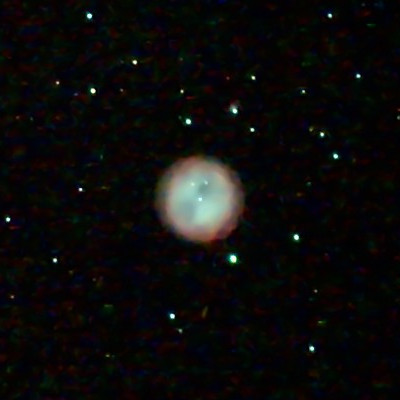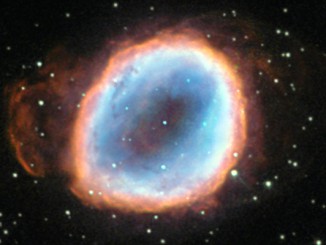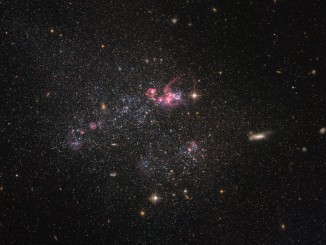

Almost circular in appearance with a diameter of about 3.3 arcminutes (about one-tenth that of the full Moon) and slightly brighter than magnitude +10, M97 gets its name from two dark patches in the nebula’s soft glow lending it the appearance of a barn owl’s face in sketches by William Parsons, 3rd Earl of Rosse who viewed it through his 72-inch (1.83-metre) aperture reflecting telescope in 1848.
Locating and viewing the Owl Nebula
At this time of year, Ursa Major lies overhead as darkness falls in the UK. The Owl Nebula lies just 2¼ degrees to the southeast of magnitude +2.3 star beta (β) Ursae Majoris, better known by its proper name, Merak. The nebula’s dim, circular glow is visible in higher magnification, larger aperture binoculars (though the current overhead aspect is hardly conducive to binocular viewing) or small telescopes.
If viewing with an undriven telescope equipped with a well-aligned typical 6 or 8× finder, M97 lies almost half of the finder’s field of view to the southeast of Merak. Recall that your telescope’s field of view will be about one degree (or two full Moons side by side) at 40 to 50× magnification. Be sure to use the lowest magnification eyepiece in your collection and allow enough time (at least 15 minutes) to get your eyes dark-adapted.
Once you have the soft, round glow of M97 in your eyepiece, can you see any structure? (Remember to use averted vision, or let your eye wander around the field of view.) Seeing the owl’s ‘eyes’ calls for a clear, moonless night and a 10-inch (25-cm) aperture telescope, preferably equipped with a UHC or OIII filter. That said, I recall one notable night at a really dark location when I saw the eyes with averted vision while using an unfiltered 8-inch (20-cm) Schmidt-Cassegrain.

If you search for the Owl Nebula by offsetting southeast from β Ursae Majoris (Merak), it’s highly that you will first encounter magnitude +10.7 barred-spiral galaxy Messier 108 (NGC 3556). Visually, there’s no mistaking the two as M108 is fainter and more elongated than M97. What’s more, if you are using a telescope magnifying 50× or less it’s possible to see the Owl Nebula and M108 in the same field of view since they are just 48 arcminutes (0.8°) apart.
If your telescope has an accurately aligned computerised GoTo mount then it’s a simple matter to select M97 or M108 from the Messier object sub-menu, but if you wish to jump to the mid-point of the pair then use the following J2000 coordinates: α = 11h 13.0m, δ = +55° 21′. If your GoTo hand control or digital setting circles (DSCs) require JNow coordinates, then you should use: α = 11h 14.1m, δ = +55° 15′ (J2019.3).
If you succeed in viewing M97 and M108 together, contemplate for a moment that the Owl Nebula is about 8,000 years old and lies some 2,500 light-years distant. The nebula represents the expelled outer layers of the elderly Sun-like magnitude +14 central star, which is condensing to form a white dwarf. Also discovered by Pierre Méchain around 1782, galaxy M108 is around 45 million light-years from Earth – around 18,000 times farther than the Owl Nebula. M108 is an outlying member of the Ursa Major Cluster of galaxies in the Virgo Supercluster.
When to look for the Owl Nebula and M108
New Moon next occurs on 4 May 2019, so from the end of April into early May the evening skies will be free from moonlight. By the end of this month, the last vestiges of astronomical twilight fade to black around 11:30pm BST for the heart of the British Isles, so deep-sky observers should make the most of any viewing opportunities.



